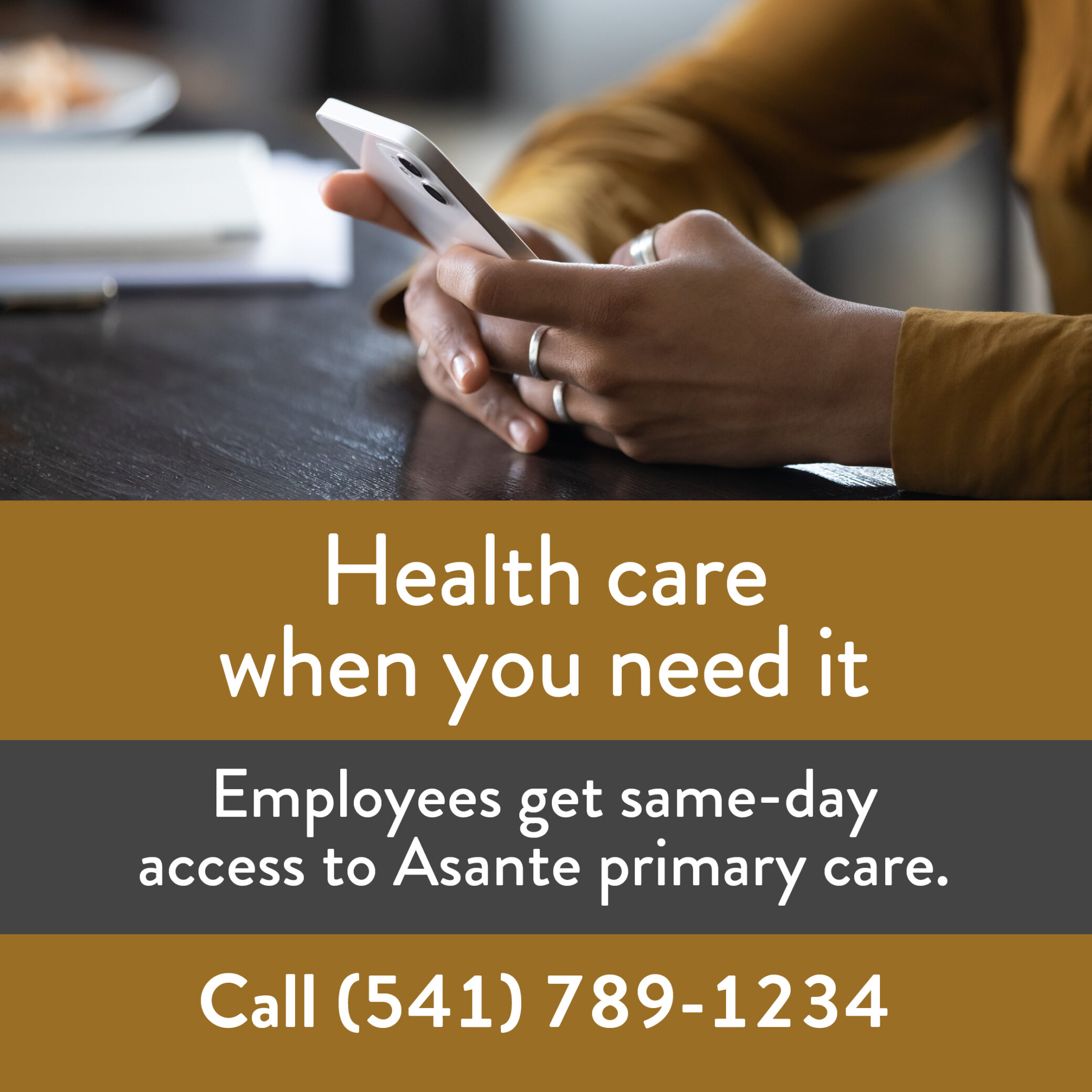Share:
In these charged times, it helps to have support. Asante’s patient experience team does just that with an easy tutorial that uses the RELATE communication model and Words That Work to validate patients’ and visitors’ emotions and support them to follow Asante’s masking policy.
Reassure/Empathize
- Always say: Hello/good morning/good afternoon. Welcome to Asante … [facility name].
- Always say: I’m happy to help you get screened. What brings you here today?
- I’m sorry that you have a friend or loved one in the hospital/needing a procedure. It can be so stressful.
- I understand that a mask is uncomfortable and feels strange.
- Sometimes I have to take a break and remove it for a few moments myself.
Explain
- Even though it feels uncomfortable for a while, having a mask over our faces helps lower the chance of spreading diseases.
- The best ways to keep our patients, community and health care workers safe are to stay six feet apart, wash your hands and cover your cough or sneeze with your elbow. Face masks add extra protection.
- You can help keep everyone safe by washing your hands, covering your cough with your shoulder and wearing a face mask.
- The risk of spreading this disease in our community is still present. For the safety of our patients and community, we must follow state guidelines and ask that all visitors and patients wear a mask.
- Our patients are at higher risk than others in the community, so everyone must wear masks here. Bandanas are not as effective as masks at preventing the spread of diseases.
- The face masks help to protect others who are vulnerable to disease, not just to protect ourselves. If we all wear masks, we are helping to keep each other safe.
Listen
- I see that you are feeling (upset, frustrated, angry, worried, etc.).
- We want to work together with you so that both our goals are met— yours and our patients’ safety. Tell me what about the mask concerns you?
- I hear you say that you would prefer to wear your own mask or face covering. Is that right?
Answer
- I hear you say that the mask is uncomfortable and you can’t breathe when you wear one. I am sorry that happens. That would make me uncomfortable too.
- We are still concerned about spreading disease to our patients who are at a higher risk.
- Unfortunately, bandanas are not as effective as masks at preventing the spread of diseases so we do not allow them here.
- Everyone must wear a mask whenever they are in a hallway or public space like the cafeteria, within six feet of anyone else, and when in patient’s rooms.
- If you start to feel uncomfortable with the mask, you can ask the care team to step six feet away for a few moments so you may remove the mask.
- If you are visiting a patient and start to feel uncomfortable, you will step away to a private corner or room (a bathroom perhaps) to remove the mask for a few moments.
Take Action
- So you agree to wearing a mask whenever you are in hallways, within six feet of others and when in a patient room.
- If you start to feel uncomfortable, you can request team members to move six feet away for a couple minutes to take the mask off (patient).
- If you are visiting a patient, you will step out of the patient’s room and find a private place to take the mask off whenever you need to.
Express Appreciation
- Thank you for your understanding.
- Thank you for your patience.
- Thank you for helping us keep everyone safe.
Tip to keep cool
Maintain a friendly tone and body language. We want that message to be kind and respectful. Remember, it’s not what you say, it’s how you say it.
Avoid arguing. This is not to time to try and change someone’s mind. Arguing will only escalate the situation and create more conflict. Instead, show empathy, support and compassion.
Don’t take an us-vs.-them approach. Avoid adopting a confrontational manner. Our patients and visitors are in a vulnerable place. They are not here to make our day worse but are trying to cope with a significant stressor.
Validate the person’s feelings. Repeat back their concerns. “I hear you say the mask won’t work for you because you can’t breathe. That is very uncomfortable for you.”
Put yourself in their shoes. Imagine what it would be like to try and see your loved one and someone is refusing to let you in, especially if they are asking you to do something you believe is foolish. How would you want to be treated?
They are coming in because they, or someone they love and care for, is sick, dying, about to have a procedure or surgery, or any number of reasons. Hospitals are scary and full of anxiety and unknowns. Our responsibility is to show kindness and compassion in any situation.
If you feel triggered or upset. Take a deep breath and ask someone to take over so you can take a break. Call your supervisor if you needed. Step away and recharge your batteries.
If the visitor still refuses to wear a mask? Reach out to a supervisor for next steps. Our ultimate goal is to find a solution to meet both needs and reduces causing additional emotional harm by refusing entry to see a family member or friend. Understanding why the visitor refuses a mask will help us find that solution.
If you have a question, please contact the author or relevant department directly.




2 Comments. Leave new
This article and the tips about what to say are really helpful and uplifting. I like the messaging about staying open and serving our community with kindness. Thank you!
Great tips and this will also help me with what to say to people not wearing masks in public, outside of the hospital, too.